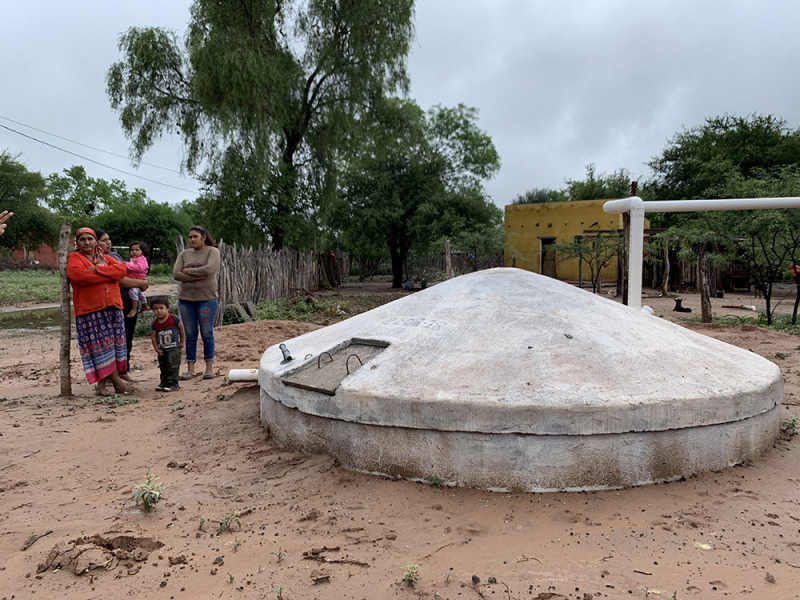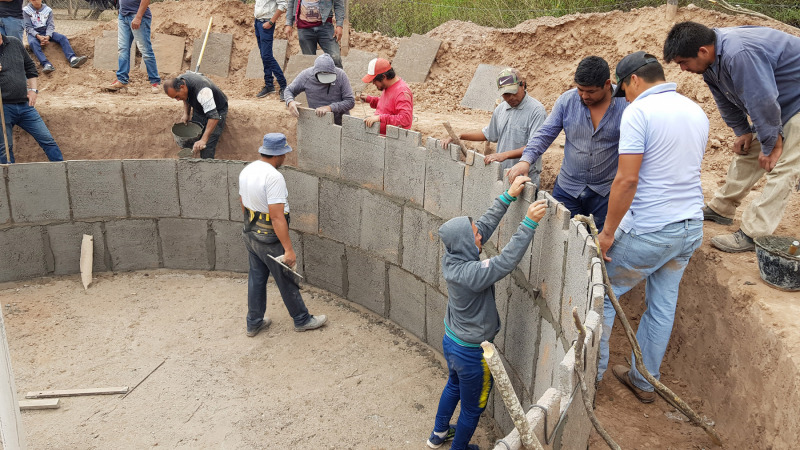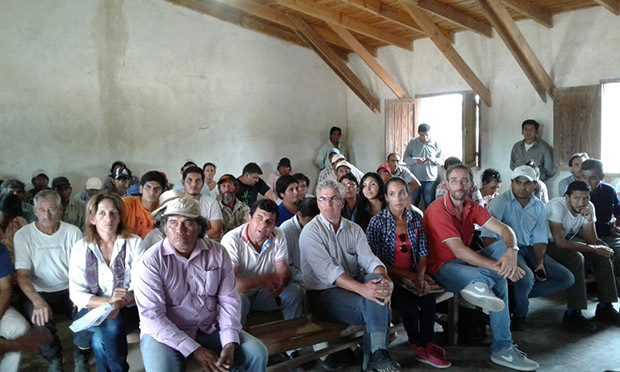No matter who you are, you need water to survive.
No matter where you live, you need water to survive.
No matter where you grew up, what you look like or how old you are, you need water to survive.
So what happens when you live in an area with hardly any water?
This is a question that some of our South American neighbors are still struggling with. Water is the top challenge that families in northern Argentina and Bolivia face. They live in small, scattered communities in a vast and arid landscape. Rivers are often many miles away. The groundwater has high levels of arsenic. When rain comes, it isn’t slow and soaking. It is frantic, evaporating almost as quickly as it arrives.
In this situation, people are either walking long distances to get a little bit of water, or they are paying high prices to have water brought to them by truck. Neither is sustainable in the long run.
There’s an additional problem in this area, too. Several indigenous groups live here. So do criollo families, which is the term for the region’s non-indigenous farmers. Both groups are poor, but that’s where their similarities might seem to end. They live in separate communities and speak different languages. For generations, they have been mistrustful of one another. This largely stems from the wider society, which has been shaped by systemic racism, discrimination and violence against indigenous people.
So in this vast region where the locals don’t trust one another but everyone struggles with water access, what if addressing one problem meant addressing both? Can water be the thing that brings people together?
Well, that’s what CWS and our partners are trying to accomplish. We’re proud to be an international observer at the Water Roundtable of Salta. (This part of Argentina is in Salta province.) The Water Roundtable has more than 25 members, including the national and provincial governments, nonprofits, Salta University, criollo and indigenous grassroots organizations, and three international nonprofits including CWS. It was created in 2016 in recognition of the fact that no one organization or group could solve the water problem alone.
Inspired by a successful initiative in a similar climate in Brazil, the Water Roundtable has set a goal to build 2,000 rainwater harvesting systems and cisterns. Remember that frantic rain? A rainwater harvesting system can help capture and store the rain. Rainwater harvesting systems are usually structures with large, gently sloped roofs. Water rolls down the roof into a gutter system, which pipes the water into a large tank, or cistern. If the cistern is built and sealed properly, the water stays clean and drinkable for a long time.
Water Roundtable members are building some of the systems/cisterns. The idea is that once some systems are operational and showing sustainable success, the provincial and national governments will invest in building the rest. As of November, 121 cisterns were under construction. Fundapaz is one of the Water Roundtable members, and they are a local nonprofit that CWS supports. Fundapaz was responsible for 55 of those 121 cisterns. They train local builders to construct the cisterns in teams. These teams are registered with the government, and cistern construction is a great way for team members to earn an income. In 2019, seven teams with 20 total builders formed. In 2020, they will add five more teams. Some of these teams are racially diverse and are comfortable working in both indigenous and criollo communities.In October, Fundapaz built two demonstration cisterns. The first was for a local agricultural association. A Brazilian technician led the training, which included local builders and 25 people invited from eight provinces to learn about building this type of cistern. The association’s 100 members now have a water source for irrigating their fruit tree plantation. The other demonstration cistern was for family. Before, the Romero family walked 2.5 miles to get safe water from a neighbor because the water from their local well wasn’t safe. “This cistern is a dream come true. Now we can have a vegetable garden and fruit trees,” Javier Romero says.
Towards the end of 2019, things were going well. Cisterns were under construction, and more and more families were accessing safe water. Even better, the Water Roundtable scored a huge advocacy victory in November. The Salta provincial legislature passed a law that all public infrastructure built in these areas, including schools, hospitals, clinics and housing, all had to include a rainwater harvesting system.
But there was a large and growing problem. A severe drought was spreading throughout Salta.
It started in September and continued for months. By January, the government of Salta convened an urgent meeting of the Water Roundtable. People were suffering, and more cisterns needed to be built as soon as possible. They came up with a plan to build 2,000 cisterns in phases of 100. A week later, a social and health emergency was declared. Suddenly, there was a high demand for skilled workers. Forming and registering new construction teams took on urgency, as did making sure that all builders had the skills and practice they needed to build sturdy, permanent cisterns.
And then….well, the rest of this story isn’t written yet. On March 17, the first COVID-19 case was confirmed in Salta. Cistern construction work stopped.
After a two-month hiatus, construction is just starting up again. It’s very local, since that’s the best way to move forward during this pandemic. But the urgent and widespread need for water access hasn’t dimmed. And so the Water Roundtable will continue to look for safe new ways to meet it.
And we’ll be with them as they do.
Agustina Ramos Mejia is the CWS Regional Representative for the Gran Chaco. Laura Curkendall is the Director of Program Communications.
Thanks to Growing Hope Globally for their generous support of this program.





